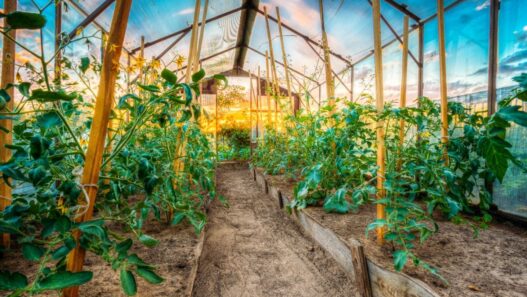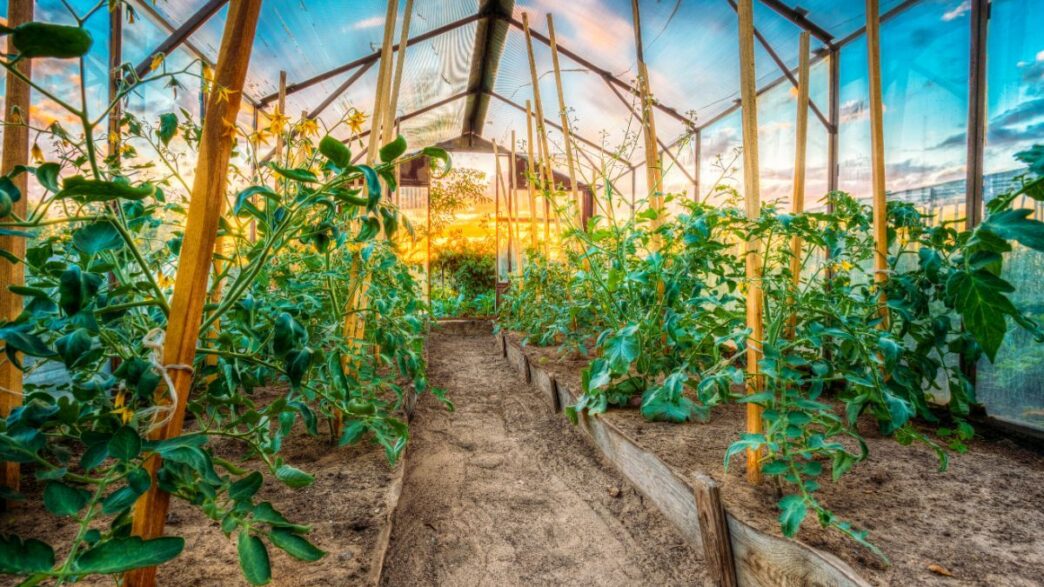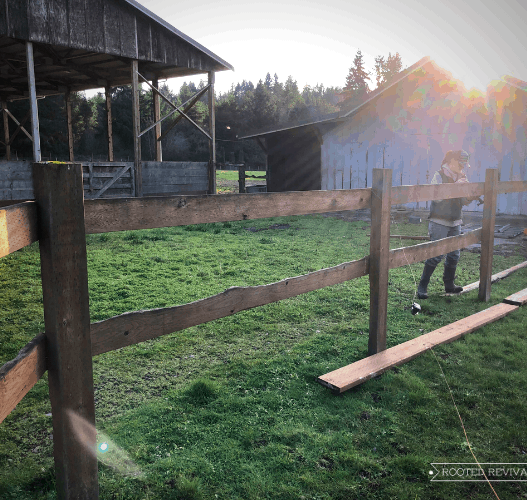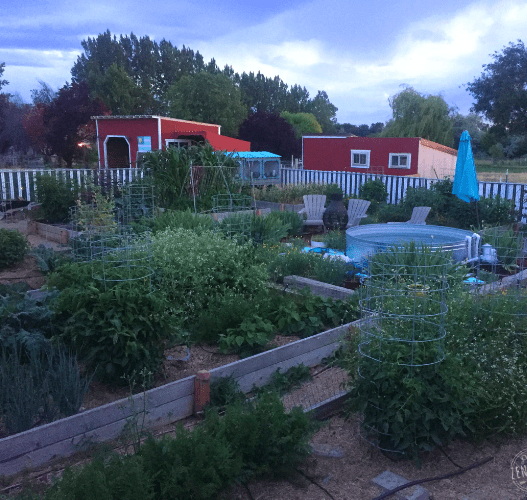Trust me – when you decide to plant different crops in the same garden, you need to plan it out! Some plants grow well together, others, not so much.
What about planting potatoes next to tomatoes?
You can plant potatoes near tomatoes, but remember to give them enough space (around 2-3 feet separating them). Having them directly next to each other will have a negative impact on both, but spaced out will be fine and create healthy produce.
I’ve been growing potatoes and tomatoes for years, and in this post, I’ll take a look at:
- How to plant tomatoes and potatoes together
- How far apart that tomatoes and potatoes need to be
- What are the downfalls of planting tomatoes near potatoes?
- Can you plant tomatoes and potatoes in the same soil?

How To Grow Tomatoes and Potatoes Together
Notice how earlier I said near, not next to.
Although tomatoes and potatoes can grow in close proximity to each other, having them directly next to one another can affect both plants negatively — but that’s easily fixable.
If you have a small garden and want to plant both potatoes and tomatoes, then, by all means, go ahead.
Plant as many as you like from your favorite veggies and fruits. However, there are a few things you need to consider when planting tomatoes and potatoes together.
Tomatoes and potatoes come from the same family, Solanaceae or the nightshade family. This family also includes:
- Bell peppers
- Eggplants
- Cayenne peppers
- Paprika
- Okra
Since they all come from the same family, all these fruits and vegetables share some common characteristics.
These common traits include the fact that they’re all susceptible to getting the same infections and diseases.
That explains why people believe it’s best to plant tomatoes and potatoes as far away from each other as possible. But in reality, you don’t need to keep them miles apart.
All you need is a little room between each plant, and surprisingly, it’s not as big a space as you might think.
How Far Apart Do Tomatoes Need to Be From Potatoes?
Not everyone has the luxury of a big gardening area to separate their crops from each other.
So to ensure that they get the chance to plant both tomatoes and potatoes at the same time — and maybe even some peppers too — they just need to leave enough room for the roots to grow.
Two to three feet will do just the trick.
That way, your potatoes, and tomatoes will each have the chance to fully grow and spread their roots. Neither one of them will affect the nutrient intake of the other.
Additionally, if any of them catch a disease, you’ll have enough space to treat the infected crop before it infects its neighbor. It won’t spread as fast when they’re not next to each other.
The Downfalls of Planting Tomatoes Next to Potatoes
Planting the seeds of tomatoes and potatoes exactly next to each other can do more harm than good to your crops. You’ll risk having the plants compete for nutrients in the soil, which could negatively affect both of them.
Moreover, both could get infected simultaneously with a disease like late blight, also known as potato and tomato blight. This is not good!
Late blight is a fungal infection that damages potato and tomato crops. It spreads between both plants by insects that attract both of them.
If one of the plants gets infected, you may need to remove the whole plant and carefully dispose of it. Otherwise, you risk infecting other plants around it.
That’s why it’s always best to protect your crops by leaving a little space between them.

Can I Plant Tomatoes and Potatoes in the Same Soil?
Unfortunately, no. It’s not recommended to plant tomatoes in the same spot where you used to grow your potatoes.
You need to be absolutely positive that the soil is completely free from infections or diseases.
Also, tomatoes and potatoes prefer different pH levels to grow and thrive. Tomatoes, like most garden plants, prefer soil with pH levels between 6 and 6.8, which is slightly acidic.
Potatoes, however, prefer their soil to be fairly acidic.
They thrive in pH levels between 5 to 5.5.
So planting tomatoes in the same soil as potatoes won’t make them happy because of the soil’s acidity. The same goes for planting potatoes on tomato soil.
Overall, it’s best to separate your crops into different soils.
That way, you’ll prevent any cross-contamination from happening, and you’ll grow your crops in an environment that’s perfect for each one of them.
So, to sum up the limitations of planting tomatoes and potatoes together, here’s a table that summarizes all the points that we’ve mentioned above.
| Point of Comparison | Issue | Solution |
| Diseases | Tomatoes and potatoes family, the nightshade, is susceptible to certain infections and diseases, such as late blight. If a plant is infected, it must be removed and disposed of immediately. | To minimize spreading any infections, plant your seeds at least 3 feet away from each other. That way, you’ll have some time to remove any infected plants and protect the other crops. |
| Growth | Growing tomatoes and potatoes right next to each other creates competition between them over the nutrients in the soil and weakens one or both of the plants. | Giving each plant enough room to spread its roots and benefit from the soil’s nutrients is essential to growing happy, healthy vegetables and fruits. |
| Soil | Tomatoes and potatoes need different soil pH levels to grow. | Avoid planting one of them in place of the other. Keep tomato soil for tomatoes and potato soil for potatoes. |









